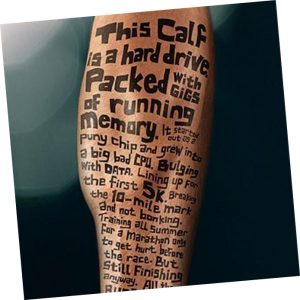 Running Advice from Serious Runners
Running Advice from Serious Runners
We asked a number of die-hard runners to share their best tips and observations about running in a sentence. We listed their answers below in the hopes that newer runners can hear what experienced runners had to say.
- If shoes are used just for running, odds are likely that they will wear out quickly, exposing your legs and joints to injury unless you have a backup pair of running shoes on hand.
- Watches that measure pace, heart rate, and distance can also improves your running efficiency and may help safeguard your leg muscles from soreness brought on by running exactly the same pace constantly.
- Having the proper running equipment is essential for leg health.
- If you don’t utilize the appropriate form for running, you might wind up injuring yourself. Learn to run properly!
- Many new runners are not experienced enough to know what equipment they need, and tend to learn the hard way by finding out too late. The best equipment, though, is a good pair of shoes.
- With resistance training you are able to construct your leg muscles and boost stamina for running…don’t skip the gym.
- Overpronation is a huge problem for me. It means your foot rolls a lot when you’re running. I’d advise going to a running store that can analyze your stride and footfall and guide you to the correct shoe/insert. Don’t buy running shoes from big sporting goods stores unless you know what you’re doing.
- Sometimes leg pain is simply based upon overexertion–learn to mix in some walking or slow jogging as an alternative to running if you absolutely must train.
- Whenever you first begin running, the key will be to not overdo it.
- With the correct gear, running in cold weather shouldn’t be an issue for you. Get a balaclava, some winter running gear, and a pair of calf compression sleeves to keep your calves warm, and you’ll be fine.
- A terrific program to begin jogging is the c25k program, designed particularly for beginners.
- Running is not hard to do and doesn’t require supervision of an instructor in most cases. Don’t over-complicate it. At the same time, don’t underestimate how much form can improve your running experience.
- Running within the morning is a superb way to begin the day. The moment you are feeling tired, stop jogging for some time and sit down.
- When running, it’s good to gradually try boosting your speed along with the distance you cover, in place of launching into a really ambitious program.
- When you start jogging, begin with a slow jog and you could then gradually develop on speed.
- The best thing about long distance runs are that you can choose to run through entire cities or on long trails, and run many miles without really having to return over the same course.
- If you want to get the maximum benefits from running, you’ve got to make it a habit to go out and run early each day.
- Not all dogs are equipped to run for long distances, so ask your vet before subjecting your dog to miles of running every week.
- Give yourself permission to run in a way that feels good…pushing yourself has its place, but don’t forget to enjoy the experience along the way.
- Have fun!
